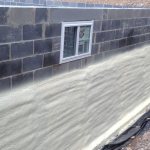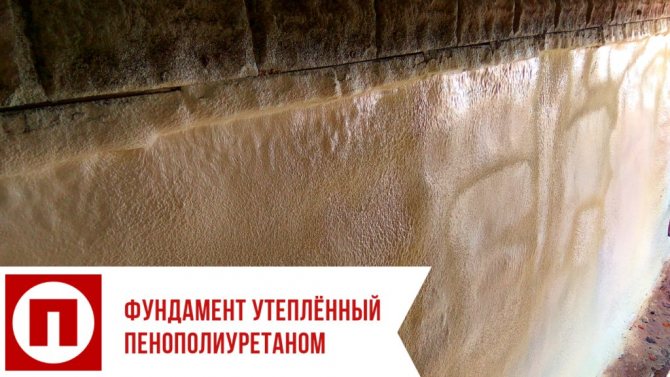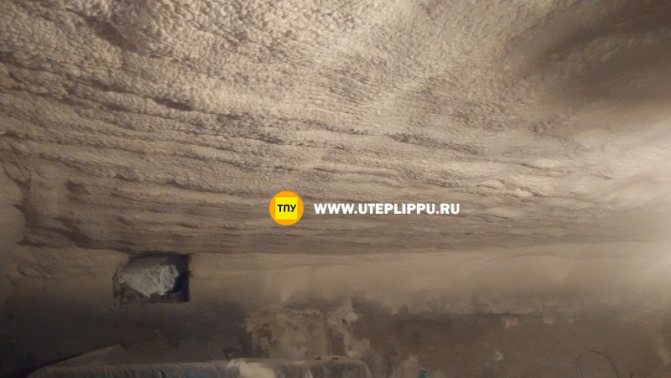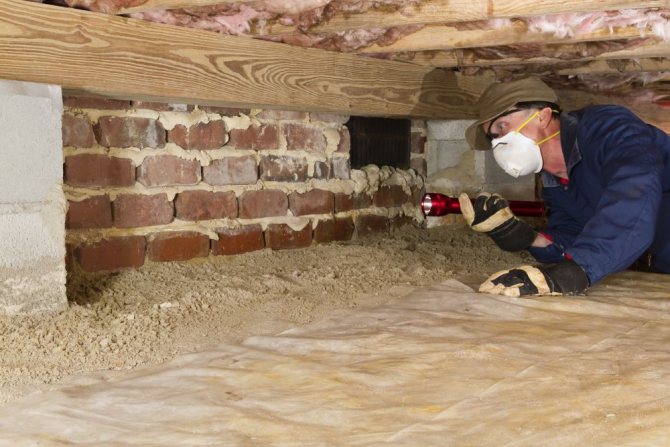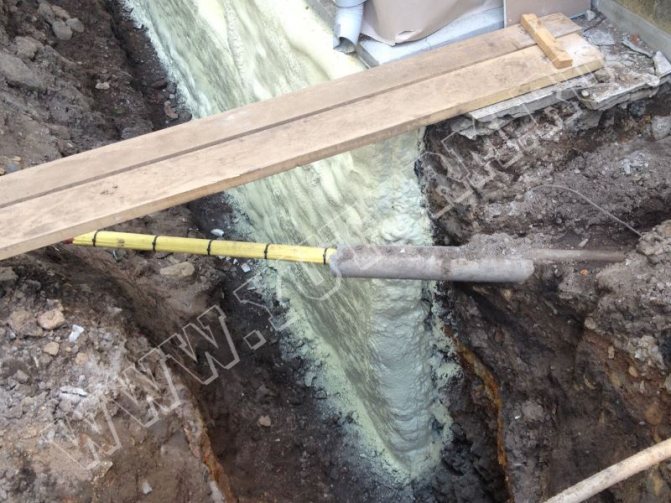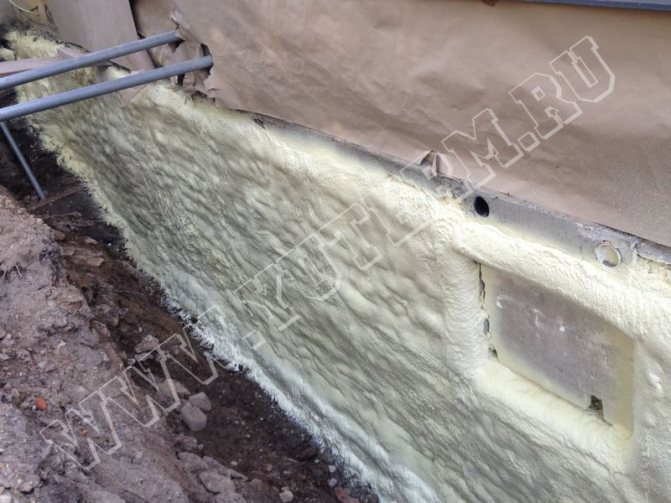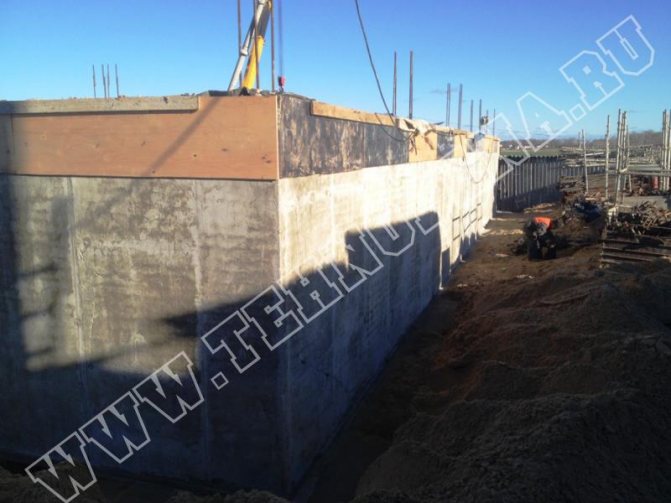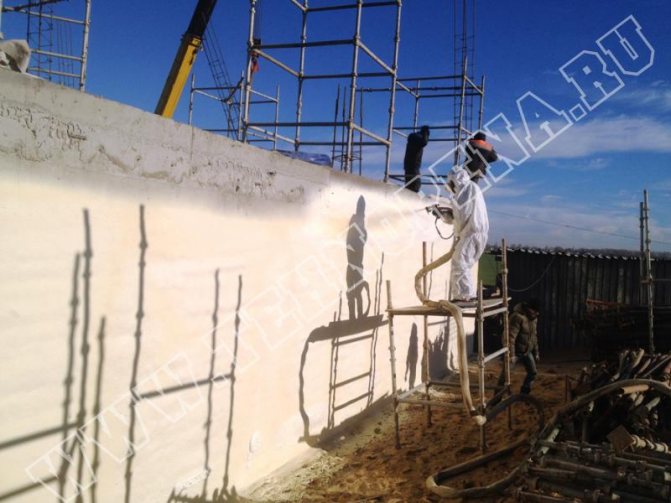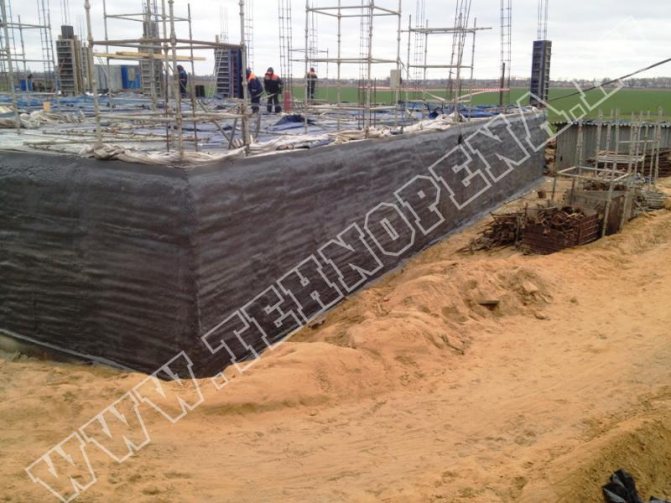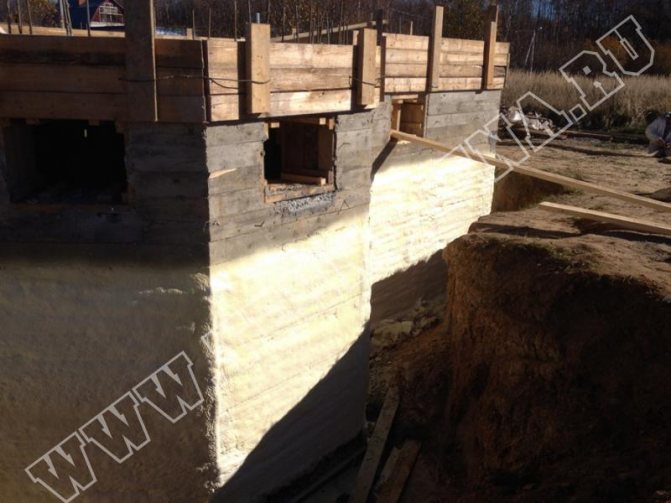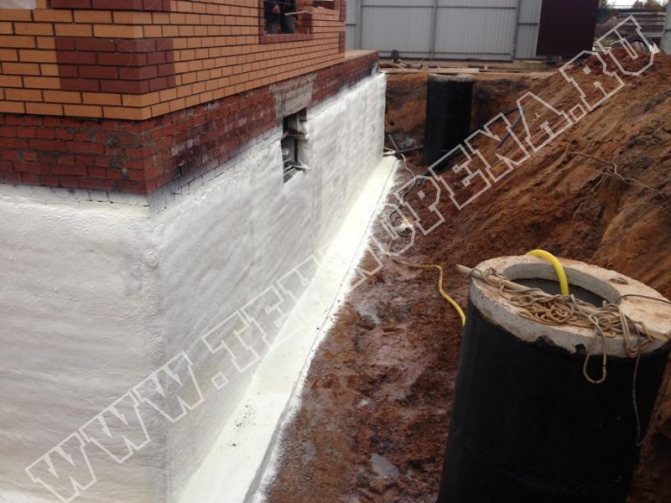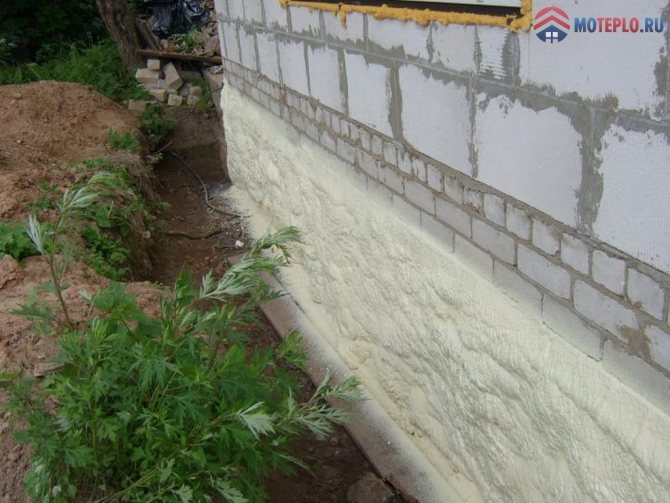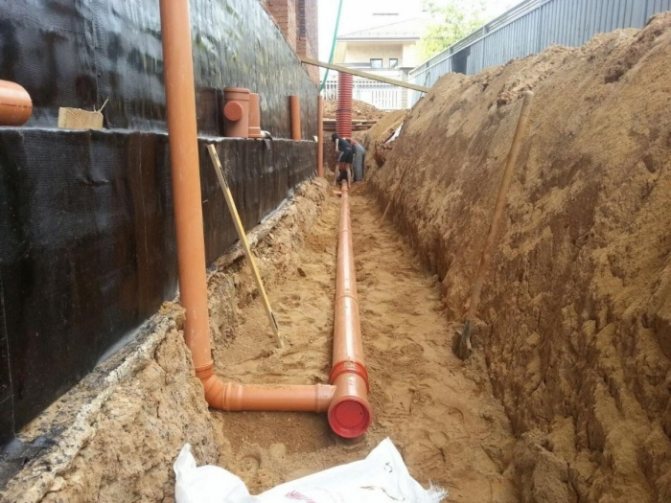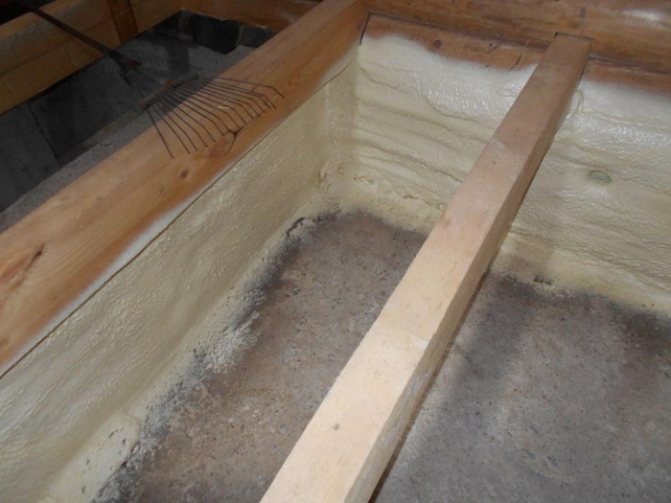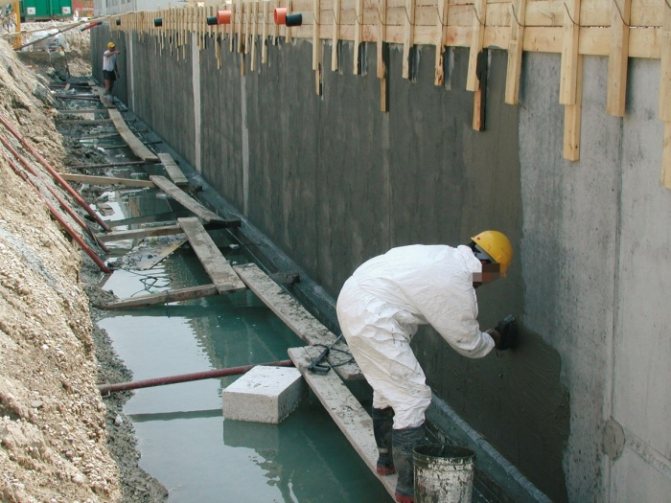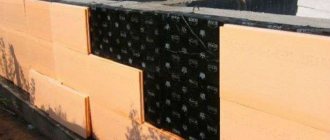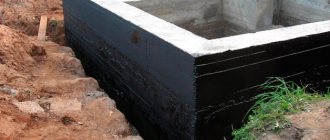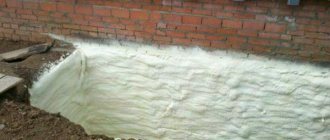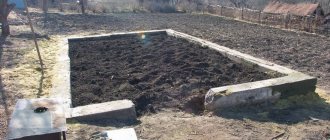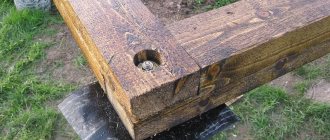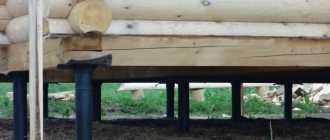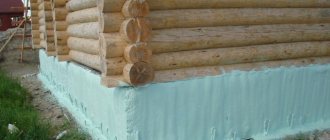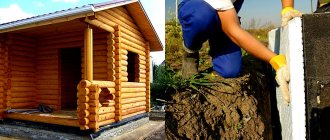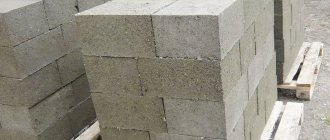Table of contents:
- Which side is it better to insulate the foundation
- What materials should not be used to insulate the foundation
- What material to choose for basement insulation
- How is the insulation of the PPU foundation carried out?
- Is it worth insulating the foundation with polyurethane foam from the inside
- Insulation of the foundation of multi-storey buildings
- How is the polyurethane foam insulation of a multi-storey building carried out
Insulation of the foundation is an important stage in the thermal protection of a house. The lower part of the building freezes easily in frost, and in spring it gets wet from melt water. The combination of exposure to cold and moisture destroys materials, leading to cracking of the masonry and subsidence of the structure.
Another factor that adversely affects the foundation is frost heaving. The water contained in wet masonry and the surrounding earth freezes during cold weather, turning into crystals. At the same time, it increases in volume and destroys wall materials. If the house is built on the so-called heaving soil containing a large amount of moisture, serious cracks may appear on its foundation after 2-3 cold seasons.
The foundation is often associated with the basement, where the inhabitants of the house store their belongings and winter preparations. In the absence of insulation in the basement, it becomes cold and damp - mold appears on the walls, and an unpleasant damp smell is felt in the air. It becomes impossible to store something there.
After insulation, the basement will become warm and dry. In most cases, it is possible to keep the temperature regime inside the basement at around 5 degrees Celsius throughout the winter, even without heating. But in order to achieve such an effect, the foundation will have to be thoroughly insulated.
The technology of applying polyurethane foam to the foundation
For spraying polyurethane foam on the foundation, a high pressure unit is used. Its plunger pumps are driven by an electric motor and dispense liquid components to create the required foam density. Mixing of components takes place in a special chamber of the installation. The finished composition enters the surface of the foundation through a spray gun, the intensity of the foam supply is regulated by the remote control.
With the help of a thermal insulation spraying unit, it is possible for two people to perform insulation on an area of up to 1000 m2 per shift. The device has an enviable productivity - more than 350 liters per minute. It is provided by a high pressure of 260 atm generated by the equipment pumps.
When starting work, you need to make sure that the equipment is in good order and the current in the power network corresponds to the value of 220 V. For a sample, you can perform a test spraying on any part of the foundation. This will make it possible to verify not only the performance of the installation, but also the quality of the foam relative to its composition in terms of homogeneity.
The application of the insulation with a spray gun on the walls of the foundation must be carried out so that the thickness of the foam layer in one pass is within 5-10 mm. In this case, the consumption of polyurethane foam is 0.5-1 kg / m2. It can change depending on the surface topography, weather conditions, etc.
In order for the adhesion of the coating to the substrate to be acceptable, the surface of the foundation before spraying must be dry, free from traces of oil, dirt, paint and rust. Due to the fact that foam components are prone to slight delamination over time, an important aspect in terms of the safety of this material is to ensure optimal conditions for this.
They can be observed by periodically rolling the barrels from the polyurethane foam. At the same time, their contents will be homogenized, becoming suitable for work.To exclude poor quality of thermal insulation, the proportions of the components of the material indicated in its data sheet by the manufacturer should be adhered to.
Insulation of the PPU foundation is carried out in layers, thus achieving high adhesion of the material at the joints. General recommendations for achieving an effective result of thermal insulation of the foundation with polyurethane foam are as follows:
- The surfaces to be treated must be clean and dry.
- If the wind speed is more than 5 km / h, it is better to refrain from carrying out work.
- When insulating the foundation from the outside, the temperature of its surface should be higher than - + 10 ° С, of the components of the mixture - about + 18-25 ° С, atmospheric precipitation is undesirable.
- The thickness of the PPU layer, sprayed in one pass, should be no more than 10 mm.
The service life of the polyurethane foam coating can be significantly increased. For this, after polymerization of all layers of foam and backfilling of the trench, a concrete blind area is made around the perimeter of the building. This work can be performed no earlier than three days after the completion of the thermal insulation of the foundation walls.
How to insulate the foundation with polyurethane foam - watch the video:
Spraying insulation on building structures is a high-tech and new solution. When expanded, liquid polyurethane foam increases its volume 40 times. Hard foam has closed pores and is difficult to damage. Knowing how to insulate the foundation with polyurethane foam, for these reasons, it is sometimes possible to refuse thermal insulation with traditional foam.
tutknow.ru
Which side is it better to insulate the foundation
Most experts recommend insulation outside. There are many reasons for this:
- increase in the service life of the foundation... Protection of the material with a heater with waterproofing properties prevents it from freezing, getting wet and cracking;
- prevention of water condensation on the inside of the foundation structures. Dampness provokes the growth of mold and mildew, which destroys the lower part of the building. A fungus that has spread from the basement to all parts of the house is very difficult to remove. Insulation of the foundation from the outside increases the temperature inside the masonry and stops condensation;
- technical simplicity... It is much easier to insulate the foundation from the outside - you just need to dig in the base of the house. From the inside, this can only be done during the construction phase or if a basement is located inside the foundation.
You can insulate the foundation from the outside and from the inside. Modern heaters even allow you to make the basement so warm that it will be possible to place a billiard room, a gym, utility rooms, workshops and much more in it.
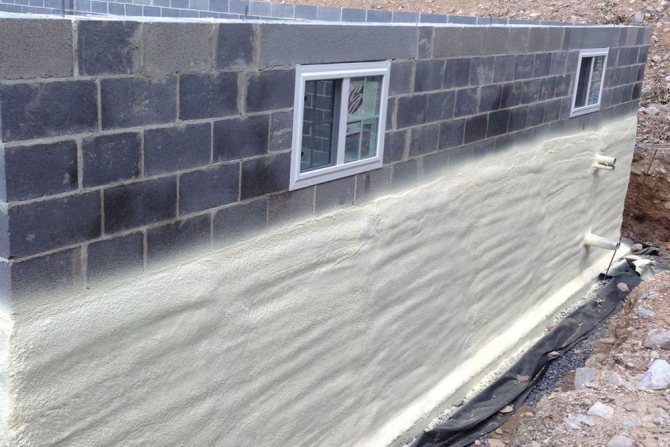
What materials should not be used to insulate the foundation
- Good water absorption... No matter how advanced the foundation waterproofing is, it will still not be possible to completely avoid moisture contact with the insulation. As a result, the material will get wet and lose its insulating properties. Therefore, glass wool and other hygroscopic materials are not suitable for this purpose. They will quickly fail and stop protecting the foundation.
- Short service life... Since the house will stand for more than a decade, it is not worth covering its foundation with material with a service life of 10-15 years. Otherwise, you will have to re-excavate and change the insulation. Therefore, you need to choose materials that serve 40-50 years.
- Attractive to rodents... On the Internet, you can see many videos of how mice and rats pull the insulation to the nests or simply settle in it. If you do not want to become the hero of such a reportage, do not insulate the foundation and basements with polystyrene foam, extruded polystyrene and other materials that attract rodents. Moreover, mice and rats quickly scatter all over the house.
- Heat-insulating paints of the "Re-Term" type... Such materials are effective only in air, since they create a film on their surface that traps warm air. In the ground, this protection is useless, since Re-Term is applied in a layer of several millimeters.
- Roll and plate insulation materials... These options are not suitable due to the need to use anchors. It is impossible to control the fasteners inside the ground, so there is no guarantee that they will not fall off. In addition, the holes from the fasteners make the insulation leaky. Can play a cruel joke and the seams connecting the insulation elements. If the joint turns out to be unreliable, water will penetrate under the insulating material and ruin the foundation.
- Heavy materials, for example, basalt wool, which weighs 15 kg per square meter. Add to this the mass of glue with which it is attached and the plaster layer recommended for protection from water. As a result, the weight of the insulation with fasteners and plastering reaches 25 kg / m². It turns out that the foundation of a house with an area of 100 square meters becomes two tons heavier from such insulation. An increase in the weight of a building can cause subsidence of the soil, displacement of the structure and other unpleasant consequences.
What material to choose for basement insulation
The best choice is polyurethane foam. This insulation is supplied in the form of two liquid components, which, mixing with each other during spraying, form a polymer foam. To insulate the foundation, a dense polyurethane foam is used, containing a large number of unopened, closed air bubbles. Such insulation is called closed-cell.
This material has high adhesion, easily sticking to any material. Polyurethane foam is not afraid of moisture, fungus, temperature changes and rodents. Such insulation serves for 50 years or more.
The material consists of 90% of gas released during the reaction, therefore it weighs little and practically does not create additional load on the ground. PPU has a low coefficient of thermal conductivity - 0.020-0.035 W / (m * K) - and keeps heat well.
Technology advantages
- The absence of fasteners during the installation process excludes the formation of cold bridges, thereby eliminating the possibility of heat leakage.
- The speed of insulation by spraying polyurethane foam is quite high - up to 500 m2 per shift ..
- The material is absolutely environmentally friendly and does not emit toxic substances into the atmosphere.
- PPU does not support combustion and increases the overall level of fire safety of the building.
- Polyurethane foam does not attract insects and rodents.
- The material passes air well, which contributes to the normalization of the indoor microclimate.
- The guaranteed service life of the PPU is up to 50 years, without changing the technical characteristics.
How is the insulation of the PPU foundation carried out?
Initially, preparatory work is carried out. Digging up the foundation, they form a trench up to a meter wide. After that, the soil is cleaned from the underground surface of the house and the surface is left to dry. There is no need to fill up small cracks and cracks - anyway, after spraying, they will be filled with foam. But with significant differences and defects, the surface of the foundation is leveled using plaster mortar.
A 5 cm thick layer of polyurethane foam is applied to the dried foundation. At the same time, not only the entire underground part is insulated, but also 40 centimeters above the ground. This will prevent melt water from entering the masonry.
PPU is applied over the entire area from top to bottom using a pistol in several passes. In this case, the polymer significantly increases in volume, turning into a fluffy porous "fur coat". After the material has dried, the foundation must be buried, since the polyurethane foam does not withstand the sun's rays well.
It is better to insulate the foundation and basement with polyurethane foam
It is about the high-quality insulation of the foundation and the insulation of the basement of the house that you need to think about in the very first place in order to isolate it from the freezing soil as best as possible, more reliably. It is also worth mentioning a significant reduction in heat losses, since according to statistics, it is through the non-insulated foundation, the basement of private low-rise buildings that up to 20% of their thermal energy is consumed.
It is better to take care of high-quality insulation of the base and basement of your house at the very beginning of construction, choosing a material that has low thermal conductivity, as well as well resistant to moisture and various aggressive environments. All these and other remarkable qualities are possessed by rigid polyurethane foam, aka polyurethane foam, which, in addition to the above, will save material resources on fasteners, since insulation with polyurethane foam occurs using a special method, the method of seamless spraying on the very surface of the foundation.
Is it worth insulating the foundation with polyurethane foam from the inside
Yes, it's worth it. This should be done during the construction phase, when there is access to the interior of the structure. With double-sided insulation, the thermal conductivity of the lower part of the house is significantly improved, and the service life of the foundation is increased.
If a basement or cellar is organized under the house, it can also be insulated. In this case, mold and mildew will not appear on the walls, and the room will become much drier and warmer.
But such measures can only be used as a supplement to external spraying. If you insulate the foundation only from the inside, leaving it open on the outside, groundwater and frost will continue to destroy the material. Although the basement is dry, the foundation may crack, causing the structure to shrink.
THERMAL INSULATION OF THE FOUNDATION OF PUF
For example, it has been experimentally proven that a house with PU foam insulation heats up faster and better than a house insulated with mineral wool. The use of basalt slabs requires additional waterproofing, which leads to an increase in the cost of work. And the service life of such insulation is only 15-20 years.
The use of foam for insulating a building during construction can only give a temporary gain in price. However, its installation will require fastening with special anchors, which will inevitably violate the integrity of the foundation and basement. And in the future, moisture will certainly penetrate to the very foundation and begin to destroy it.
It is quite clear that in this case there will be no thermal insulation effect at all. Insulation of the foundation with foam outside and inside will only require a finishing coating with polyurea to create an ideal thermal and waterproofing effect. The weight of such insulation (and hence the load on the structure!) Is 40-50 times less than, for example, mineral wool.
At a price, spray insulation is comparable to cladding with mineral plates + additional layers of waterproofing, and its service life is much longer - more than 50 years!
In addition, polyurethane foam is environmentally friendly, non-hygroscopic, fire resistant and gives strength to the entire structure. Possesses 100% adhesion and absolute zero waste. Allows you to perform a monolithic coating of internal and external surfaces of any, even the most complex configurations.
It has a low coefficient of thermal conductivity, due to which the thickness of the thermal insulation layer is usually much smaller than that of other materials.
The material is distinguished by significant strength to mechanical stress and elasticity, withstands temperatures from -200 to +200 ° C, does not require fasteners, but is very simple to spray and heats perfectly!
And PUF is also not susceptible to cracking, resistant to acids, alkalis, solvents. And it perfectly absorbs noise, which undoubtedly adds comfort to any apartment - after all, you will not hear street noise and loud conversations behind the wall.
And you will finally start to get enough sleep, despite the happy holidays of your neighbors! Insulation of the PPU foundation makes it an extremely profitable material for protecting a wide variety of buildings and structures, both outside and inside.
The structure of polyurethane foam consists of the smallest bubbles filled with air, due to which it performs well the functions of a heater, as well as a waterproofer and a vapor barrier.
During the construction process, many developers choose to insulate the basement with polyurethane foam. And this is certainly a competent and practical solution, because the owner of the building receives guaranteed protection from cold and dampness for as much as 50 years!
Insulation of the foundation of multi-storey buildings
With the help of polyurethane foam, not only private households are insulated, but also apartment buildings. This material is sprayed on any type of foundation for high-rise buildings - slab, pile, tape, combined. Nowadays, this is done already at the construction stage. For such work, only high-density closed-cell polyurethane foam is used.
But buildings built many years ago do not have such insulation, so it has to be carried out separately. Insulation is applied to the outside of the house wall and inside the basements. Dried and hardened polyurethane foam is covered with facade plaster or other finishing materials.
The work is carried out at a temperature not lower than 5 degrees in dry, calm weather. Since the spraying rate is quite high, it is possible to insulate the entire foundation of even a large house in one or two days.
Pros and cons of PU foam spraying technology
Insulation of the foundation with PPU has many advantages. The thermal conductivity is only 0.025 W / m • K. The elimination of additional loads on the area undergoing insulation, as well as the absence of the need to strengthen the supporting structures in the case of using rigid polyurethane foam with a low density (0.35-0.70 c / m3).
Continuous adhesion of interacting surfaces ensures their protection from condensation. Excellent resistance to aggressive media and compounds of various chemical elements. The structure is practically pore-free, which increases the moisture-repellent properties of the insulation. The mobility of the equipment makes it possible to work both on conventional construction sites and on individual sites.
The productivity of modern equipment is such that two specialists are able to insulate 500-1000 square meters of the treated area in a working day.
ultra-term.ru
How is the polyurethane foam insulation of a multi-storey building carried out
First, the building is dug in to a depth of 50-60 cm. The walls are cleared of earth and dried. Sand is poured at the bottom of the formed trench. After that, PPU is sprayed on the entire surface of the foundation, capturing about half a meter above ground level. The dried foam is cut off and plastered. You can use special finishing boards instead of plaster. The polymer, which is above ground level, is trimmed with cladding.
Around the house, a concrete blind area with drainage channels, ebbs and gutters is organized. After such work, the basement of the house becomes dry and warm, and the cost of heating is reduced by 15%. In addition, cracks on the foundation and facade of the house cease to appear, and the basements are not flooded with melt water.
Having insulated the foundation, you don't have to worry about its durability and strength, especially if you have chosen reliable and durable waterproof polyurethane foam as insulation. Since this material is not cheap, for work you need to contact firms that cooperate directly with manufacturers of PU foam components. Such companies offer fairly reasonable prices, have modern equipment and have experienced specialists.
We analyze the advantages and disadvantages of insulation
PPU has embodied the functions of thermal insulation, hydro- and noise insulation. PPU is reliable and durable. Does not allow moisture to pass through, does not release heat.Any kind of finishing can be put on top of polyurethane foam: siding, stone, slabs.
In comparison with the main competitor of polyurethane foam - polystyrene - polyurethane foam layers applied to the foundation do not have gaps for the penetration of cold and moisture, additional measures are not required with it (sealing joints, sealing joints, mounting fasteners), saving time for insulation and money. Also, additional layers of vapor and waterproofing material are not needed.
The disadvantages of the insulation are not significant: there is no resistance to UV rays, "capricious" in bad weather conditions. If you take them into account, you can carry out work and get the desired effect.
The need to apply polyurethane foam with special equipment slightly darkens the picture. But the low cost of the material and the ability to rent equipment in the end outweigh it.
The versatility of the material allows you to save not only on additional layers of waterproofing, but also to significantly reduce heat loss, and hence heating costs.
